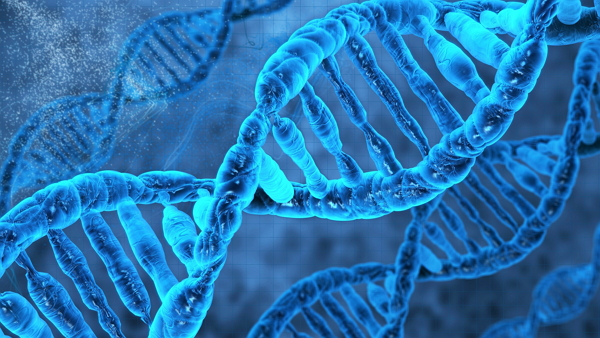Introduction to Genetics, Genes and Chromosomes
Genetics is the study of heredity, which is the biological process of a parent passing certain traits onto his/her children. Every child inherits genes from both the biological parents and these genes, in turn, express specific traits. Some traits may be physical, for example, hair and eye color and skin color, etc. On the other hand, some genes may also carry the risk of certain diseases that may pass on from parents to their offspring.
It is generally considered a part of biology, but it intersects frequently with many life sciences. Gregor Mendel, a late 19th-century scientist, is considered the father of genetics. Mendel studied trait inheritance i.e. patterns in the way traits are handed down from parents to offspring. He observed that pea plants inherit traits by way of discrete "units of inheritance". Modern genetics has expanded beyond inheritance to studying the function and behavior of genes.
ORIGINS OF HEREDITY
After the rediscovery of Mendel’s work, the scientists tried to determine which molecules in the cell were responsible for inheritance. In 1911, Thomas Hunt Morgan argued that genes are located on chromosomes, based on the observations on Drosophila, the fruit fly. Morgan’s observation of sex-linked inheritance in Drosophila led him to the hypothesis that the genes are located on chromosomes.
DNA STRUCTURE
James Watson and Francis Crick determined the double helix-like structure of DNA in 1953, using X-ray crystallography. Their double-helix model had two strands of DNA with the nucleotides pointing inward, each matching a complementary nucleotide on the other strand to form a twisted ladder with rungs.

This structure showed that genetic information exists in nucleotides on each DNA strand. If the strands are separated, new partner strands can be reconstructed for each based on the old strand. This property gives DNA its nature where one strand of new DNA is from an original parent strand. The genetic information lies within the cell nucleus of each cell in the body. The information can be considered to be retained in a book. Part of this book the genetic information comes from the father while the other part comes from the mother.
GENES AND GENETICS
Each gene is a piece of genetic information. All DNA in the cell makes up the human genome. There are about 20,000 genes on one of the 23 chromosome pairs found in the nucleus. About 12,800 genes have been mapped to specific locations (loci) on each chromosome. This database was begun as part of the Human Genome Project. Genetic processes work in combination with an organism’s environment and experiences to influence development and behavior, referred to as nature versus nurture. The intra or extra-cellular environment of a cell or organism may switch gene transcription on or off. A classic example is two seeds of genetically identical corn, one placed in a temperate climate and one in an arid climate. While the average height of the two corn stalks may be genetically determined to be equal, the one in the arid climate only grows to half the height of the one in the temperate climate, due to a lack of water and nutrients in its environment.
THE GENE
A gene is a portion of DNA that codes for a known cellular function or process (e.g. to "make melanin molecules"). The nucleotides (molecules) that makeup genes can be seen as ’letters’ in the English language. Nucleotides are named according to the four nitrogenous bases they contain - cytosine, guanine, adenine, and thymine. A single gene may have a small or a large number of nucleotides. A single gene often interacts with neighboring genes to produce a cellular function.
CHROMOSOMES
The genes lie within the chromosomes. Humans have 23 pairs of these small thread-like structures in the nucleus of their cells. 23 or half of the total 46 comes from the mother while the other 23 comes from the father. The chromosomes contain genes just like the pages of a book. Some chromosomes may carry thousands of important genes while some may carry only a few. The chromosomes, and therefore the genes, are made up of the chemical substance called DNA (Deoxyribonucleic Acid). The chromosomes are very long thin strands of DNA, coiled up tightly. Chromosomes are numbered from 1 to 22 and these are common for both sexes and are called autosomes. There are two other chromosomes given the names X and Y and are also termed sex chromosomes. The X chromosome is much larger than the Y chromosome. The genes are further made up of unique codes of chemical bases comprising A, T, C, and G (Adenine, Thymine, Cytosine, and Guanine). These chemical bases make up combinations and permutations, similar to the words on a page. These chemical bases are part of DNA. The words, when strung together, act as the blueprints that tell the body cells when and how to grow, mature, and perform various functions. With age, the genes may be affected and may develop faults and damages due to environmental and internal toxins.
MALES AND FEMALES
- Women have 46 chromosomes (44 autosomes plus two copies of the X chromosome) in their body cells. They have half of this or 22 autosomes plus an X chromosome in their egg cells.
- Men have 46 chromosomes (44 autosomes plus an X and a Y chromosome) in their body cells and have half of these 22 autosomes plus an X or Y chromosome in their sperm cells.
When the egg joins with the sperm, the resultant baby has 46 chromosomes (with either an XX in a female baby or XY in a male baby).
MULTIPLE GENE INTERACTIONS
Organisms have thousands of genes, and in sexually reproducing organisms, these genes generally assort independently of each other. This phenomenon is known as "Mendel’s second law" or the "Law of independent assortment". It means that the alleles of different genes are shuffled between the parents to form offspring with different combinations.